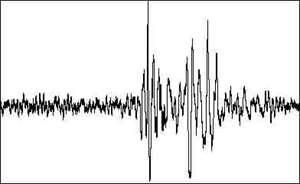
Belgian scientists have detected ultra-low frequency sound waves - infrasound - from a meteor that exploded over Germany in November 1999.
They were picked up by an observatory more use to searching for the particular infrasound signatures associated with nuclear explosions. It is one of the ways scientists can monitor for compliance with test ban treaties.
This particular meteor would have exploded with a force of 1.5 kilotons of TNT, equivalent to a small nuclear weapon.
The signals were detected by the seismology division of the Royal Netherlands Meteorological Institute.
Too low to hear
The world is full of sounds that humans cannot hear. Infrasound is too low for us but if we could hear it we would be deafened with the noise produced by thunderstorms, ocean waves, creaking continents and meteors.
Belgian scientists operate an infrasound observatory, which consists of an array of micro-barometers that detect very low-frequency (0.002 to 40 hertz) sound waves.
The array is part of a global network of about 60 facilities designed to "listen out" for nuclear weapon tests. The network keeps an "ear" on signatories to the Comprehensive Test Ban Treaty to see if they are meeting their obligations.
Writing in the Geophysical Research Letters, researchers describe an event they detected on 8 November, 1999.
Useful information
An intense burst of infrasound came from the northeast. It was later identified as a meteor explosion in the atmosphere over northern Germany. Several people provided eyewitness accounts of the flash in the sky.
From all the available data, it seems that the meteor exploded with the force of a small nuclear weapon at an altitude of about 15 km (9 miles).
Some astronomers are taking a keen interest in the worldwide infrasound monitoring network.
They hope it could provide valuable sources of data for estimating the number of unseen meteor explosions in our atmosphere.



There appears to be many infrasound, VLF, and ELF networks listening and able to discriminate atmospheric explosions. I would like to see the investigation of the AF 447 disaster ask for the raw data feeds of several of these networks to see what they show.
Don't hold you breath.